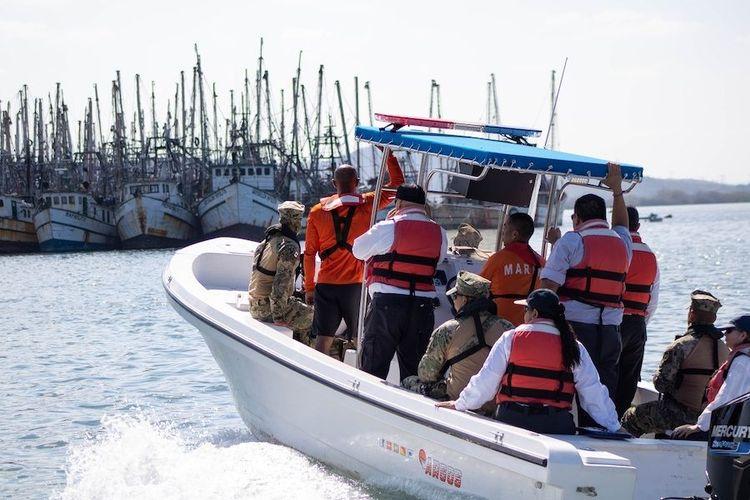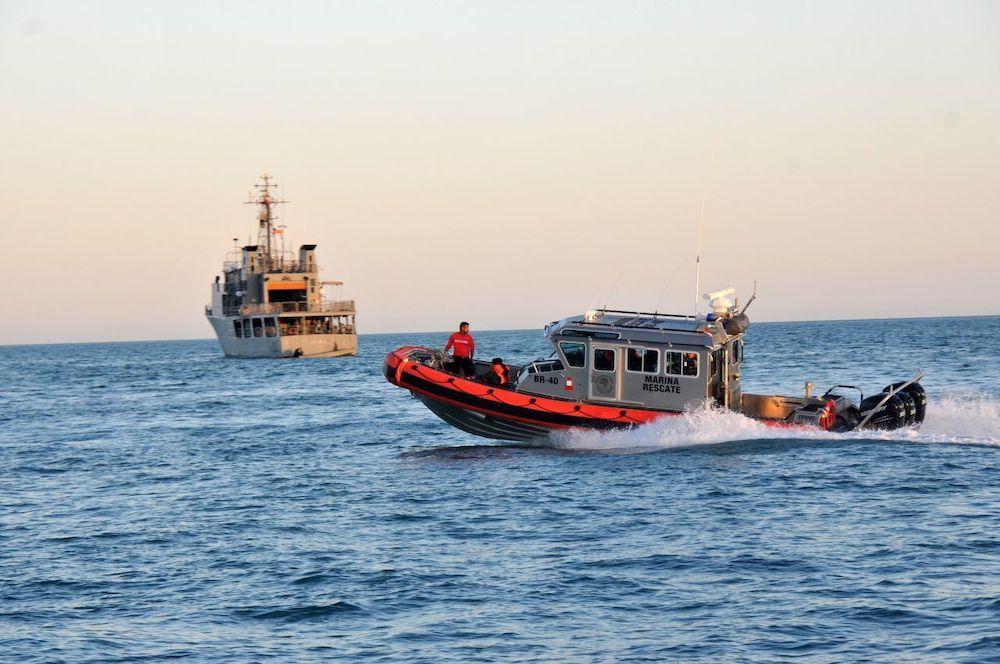At the same time that efforts to combat illegal fishing by the Secretariat of the Navy (Semar) focus on coastal fishing, the results are less significant. In 2021, sailors insured 51,166 kilos, which is 3.4% less than in 2020.
In contrast, insurance operations against illegal fishing increased 426% between the two years. Going from 73 carried out in 2020 to 384 assurances in 2021, in accordance with a request for transparency.
For the most part, the restraints are under 100 kilos, with an average of 25 kilos per operation.
“This tells us that the inspection effort has been oriented to another segment of the chain of producers, such as artisanal fishermen, since the large centers of accumulation of illegal fishing products do not have 10 or 20 kilograms, there are tens or even hundreds of tons,” explained Rigoberto García Soto, lawyer and former Director General of Inspection and Surveillance.
The number of insurance offered in this publication does not include the Eighth Naval Region in Acapulco, where Semar lacks such data. On the other hand, the region reported 302 routes, including 1,574 kilos (included in the total weight per year of this article).
In addition, the naval sectors of Cabo San Lucas and Puerto Peñasco did not offer insured kilos, but the number of insurances (included in the global number of insurances) did.
García pointed out that it is important to consider the regions where the detentions take place and the type of species that are insured.
“Because if we are talking about 10 or 15 kilos of species such as mojarra and shrimp, I think they are ant efforts that would not genuinely represent what is required to be able to control illegal fishing,” said the lawyer.
In the case of information provided by Semar to Causa Natura Journalism, the species that stands out in the insurance is shrimp with 14,872 kilos and crab with 14,441 kilos in 2021.
The main detentions have taken place in Ahome, Sinaloa, followed by municipalities such as San Blas, Nayarit and Naranjos, Veracruz, to smaller-scale fishermen or in local markets.
“When I mention Ahome, I could tell you that it is possible that they are shrimp and individual anglers with stingrays, who catch five or ten kilos a night at poaching events, without permission, even during the harvest. It captures more for survival than for large marketing centers,” García explained.
Without resources
Assurances, as indicated by the General Law on Sustainable Fisheries and Aquaculture, are withholds that form part of administrative sanctions to address the multiple faces of illegal fishing.
Given the use of prohibited fishing gear, the capture during fences and the hunting of protected species, insurance and seizures should serve as a precautionary measure in a scenario where poaching exceeds 40% of the total catch in Mexico.
However, in recent years, the presence of inspectors and the budget for institutions such as Conapesca have decreased and, with it, the effectiveness in protecting natural resources.
For example, in the six-year period from 2006 to 2012, there were 214 fishing officers; for the next, from 2012 to 2018, we worked with 170; and in 2018, only 104 inspectors arrived.
“There is an abandonment by the federal government to fisheries and environmental surveillance in general terms. Today, what is happening with natural resources is a tragedy in the country, there is indiscriminate exploitation and there is not enough presence on the part of the authorities to deter illegal activities,” García Soto explained.
In March 2020, the Morena caucus in the Chamber of Deputies presented a bill to transfer inspection and surveillance responsibilities in the fight against illegal fishing from Conapesca to Semar.
“The transfer of responsibilities does not address the root problem, the way in which it is being done means taking the problem to another institution, in this case, to the Secretariat of the Navy,” said Renata Terrazas, vice-president of the Oceana organization in Mexico.
According to the vice-president, this is because during these years there has been “no clear strategy to combat illegal fishing”, a regulation for its implementation or a census with sufficient information on those who are engaged in fishing.

Semar inspection in coordination with the Ministry of Agriculture and Rural Development (Sader). Photo: Conapesca.
Without sanctions
Talking about insurance, large or small, about illegal fishing products is not the same as talking about sanctions.
“The fact that the authority today announces 10 kilos or 10 thousand tons confiscated does not mean that there was a sanction at the end of the administrative process. A provisional withholding does not amount to a confiscation,” said lawyer García Soto.
During 2021, in Acapulco, Guerrero, the Eighth Naval Region, which reported 302 total routes, only collected 11 inspection records for precautionary retention.
The lack of effective seizures, experts say, is more serious given the lack of resources to work with products such as fish that lose their state of preservation quickly.
In an ideal scenario, as described by García, insurances should turn into confiscations - through the intervention of a judge - and go to the State to be sold and used for inspection and surveillance funds.
For 2022, insurances seem to follow the line of increase. Until April, Semar shared that 70 had been carried out with the collection of 2,807 tons, where the highest retention occurred on January 10 for 630 kilos of huachinango in Puerto Vallarta, Jalisco.
“In general, these insured products that are perishable spoil or give them an illegal sale that no one ever reviews,” García said.



Comentarios (0)